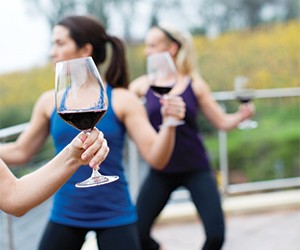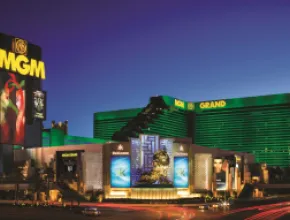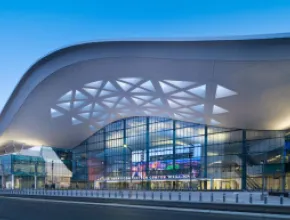As new wine regions spring up around the country, business is still booming for the nation’s predominant grape growers in California’s Napa and Sonoma counties, and the unique ways to experience the region are increasingly expanding.
“Our overall tourism business is doing terrifically well and growing year over year,” says Clay Gregory, president and CEO of Visit Napa Valley.
He reports that total lodging revenue in August was up almost 15 percent over last August, which is already one of the destination’s biggest months.
Napa hotels and venues tend to attract corporate groups and pharmaceutical, medical and legal associations, and group business is even stronger than general tourism numbers, recording a 35 percent increase this August over last year’s numbers.
Gregory encourages planners to look at Napa during “cabernet season,” which runs from November through April, or on weekdays, since hotel rooms are usually booked with leisure travelers on weekends.
But with so many wine trails and regions around the country to choose from, what makes Napa and Sonoma stand out?
“It’s really the diversity of lodging and activities,” Gregory says. “From five-star super luxury resorts to smaller properties, and hot-air balloon rides to golf courses.”
For team-building programs, he recommends wine-blending events where attendees leave with their own custom bottle of wine, like the one at Judd’s Hill winery. Or groups can experience Wine Country’s excellent culinary tradition with cooking classes at the Fatted Calf in the Oxbow Public Market, where participants make their own salumi, learn about charcuterie or work together to butcher a whole hog.
“It’s quite an undertaking,” Gregory says.
Napa is also home to two Michelin star restaurants, French Laundry and The Restaurant at Meadowood.
The region’s winemaking history dates back to the mid-1800s and adds dimension to the destination, with historic touches woven into many resort offerings. PageBreak
In addition to fine dining, Meadowood resort in St. Helena also offers an array of group golf programs, including Hickory golf, which participants play with historic hickory clubs and “gutta-perchas,” which are early golf balls made from feathers, leather and tree sap. Doug Pike, the resort’s golf pro, says the main difference is that when using the authentic clubs and balls, players lose as much as 40 percent of their shot distance, so the course seems much longer and it creates a fun challenge. Pike says groups often enjoy par-3 shootouts, which can be as quick as 90 minutes and are less intimidating for novice golfers, as well as playing 9 holes with the traditional hickory clubs and then transitioning back to modern equipment. Pike is also enthusiastic about Meadowood’s top-of-the-line golf studio, where players utilize the latest technology, including 3D imaging and an indoor driving range, to enhance their swings and improve their game.
Operating in both Napa and Sonoma, local celebrity and professional speaker George Webber and his Napa Walking Tours company lead historic sightseeing strolls through Sonoma Plaza and downtown Napa. Not short on personality, the tour sites include the Napa Promenade and mansion district, home to the elegant estates of wealthy 1880s bankers and steamboat captains. Webber draws on his acting background to entertain tour guests, changing costumes and characters over the course of the day. His team has worked with private groups as large as 100 people.
“The tours are a popular morning activity for groups, something to do before wine tasting,” he says. “Intellectual discussions about the area’s architecture can be great for team building, and Napa’s mansion district is a tour highlight. It was the richest city in the Bay Area back in 1890.”
The Napa County Historical Society keeps archives for the entire valley and offers group programs and tours throughout the year. And of course, groups can visit historic wineries like Beringer Vineyards and Far Niente, both of which Gregory says are “very excited about groups.”
One of the valley’s original stone wineries, Far Niente was founded in Oakville in 1885 and produces renowned chardonnay and cabernet sauvignon. The winery fell into disrepair during Prohibition in 1919, but was restored 60 years later. Visitors can tour its 40,000-square-foot wine caves, which were part of the original plans but not constructed until 1980.
In St. Helena, Beringer welcomes groups of all sizes, featuring venues such as bocce courts; the 17-room Rhine House, an elegant stone mansion; the Hudson House, which was built in 1852; and outdoor space underneath the “reaching branches and ancient trunk” of a 150-year-old walnut tree. Beringer offers various guided tour options and tastings, including programs in the property’s Old Winery tasting room.
Robert Mondavi’s main vineyard dates back to 1966 and the distinctive “Four Decades” program allows guests to sample treasured historic vintages.
“All these properties have fantastic ambassadors that share the untold stories about the history of winemaking and Napa Valley,” Gregory says.PageBreak
Other top meeting and event options include the 180-room Westin Verasa Napa, located on the riverfront in downtown Napa, and the fun and funky bowling lanes at the Meritage Resort’s Crush Ultra Lounge. In addition to event spaces, the Westin also offers an off-site catering program and partners with local wineries for tastings and private tours.
A few miles west along Highway 12, the city of Sonoma sits in its own lush valley. “We love that [Sonoma] is side by side with Napa,” says Wendy Peterson, executive director of the Sonoma Valley Visitors Bureau. “There is a different vibe in each valley, and visitors can easily experience both during a two-day stay.”
According to Peterson, Sonoma Valley is experiencing a great resurgence with increased group interest, especially as small groups discover and fall in love with the charming, walkable destination.
“People enjoy coming here for conferences because of the small-town feel, and they’re energized by the community atmosphere,” she says.
Sonoma is home to Buena Vista, California’s first premium winery; Mission San Francisco Solano de Sonoma, the last of the state’s 21 Spanish colonial missions; and the historic eight-acre Sonoma Plaza, which entices visitors with tasting rooms, cafes, quaint lodging choices, boutique stores and shaded cobblestone paths.
“The region’s history adds to the charm,” Peterson says.
In the hills above town, Jack London State Historic Park shows off both Sonoma’s rich history and its beautiful outdoor scenery with space for meetings, events and hiking. The legendary author once purchased 130 acres of primitive land outside Sonoma and began building a barn and the Wolf House, a nickname for London’s dream home referencing his prolific writings about wolves and dogs in literary works such as Call of the Wild and White Fang. The Wolf House burned down in 1913 in a mysterious fire and the Londons never lived in it, but groups can now tour the ruins. The park contains seven venues, from the tranquil Cottage Garden to Beauty Ranch meadow, with picnic grounds for up to 1,000.
“It’s important that planners build in time to explore the natural assets that surround Sonoma,” Peterson says.
Additional team-building recommendations include a trip to the Sonoma Raceway or cooking classes at Ramekin Culinary School, which offers intimate retreats and custom group programs for up to 80 attendees. Ramekins is located a few blocks from the Sonoma Plaza and celebrates the city’s Spanish heritage with a tile roof, spacious patio and other architectural touches.
In the northern realm of Sonoma County, the Healdsburg Shed is a new, light-filled restaurant and group venue downtown, with event space and distinctive dining options, from hyper-local sandwiches to a unique “fermentation bar.”
The new West End Farmers Market now operates seasonally on Sundays in Santa Rosa, and another new farmers market opened in the town of Forestville along the Russian River. Groups can also go stand-up paddleboarding on the popular river with Rubicon Adventures.
Like Sonoma, Santa Rosa also offers a bustling downtown plaza. The city’s historic Railroad Square has been a prime gathering spot since the arrival of the first trains in the 1870s. The square showcases wine, food and community events and is surrounded by more than 300 hotel rooms at properties including Hotel La Rose and the Hyatt Vineyard Creek, which both offer function space.






